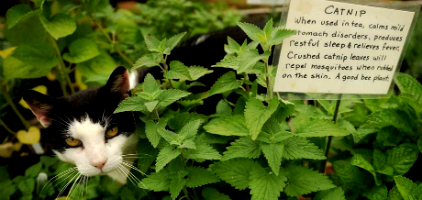1. Cut back roses and shape your shrub roses. Those tall bushes
can be trimmed to 1 ½ to 2 feet in height with open centers. Use a
sharp pair of pruners and a good pair of leather gloves. Climbing
roses should be left un-pruned until after their spring bloom. March
is also a good time to add roses to the landscape.
____________________________________________________
2. Care for fruit trees. There is still plenty of time to spray win-
tering insects with dormant oil. Pruning to open up the centers will
help to reduce disease problems with better air flow. Added sunlight
will help to ripen and color the fruit. A few ideas of additions to
your orchard: peaches, pears, plums, nectarines, figs, cherries,
apples, pomegranates, and persimmons.
____________________________________________________
3. Tend vegetable garden. The first half of the month is the right
time to plant potatoes, asparagus crowns, broccoli, cabbage, cauli-
flower, Brussels sprouts, mustard and collard greens, carrots, rad-
ishes, Swiss chard, and lettuce.
____________________________________________________
4. Care for lawn. Early March is a great time to cut the lawn close
and aerate if the soil has become compacted. A quarter to half inch
top dressing of manure-based compost like Happy Frog soil condit-
ioner will go a long way to revitalize turf grass with nutrients, mic-
robes, and beneficial bacteria. If the soil below the turf grass is poor,
aeration and Happy Frog will work wonders. As a top dressing,
Happy Frog mixed with a little sand can help to level off the low
places. To stop lawn weeds, apply corn gluten by the end of next
week.
For the second half of the month, with the last average frost date is
behind us, we can shift to warm season gardening. Some gardening
activities to concentrate on:
5. Fertilize turf grass. This will begin to grow as the ground warms
up. An organic lawn fertilizer with a 3 -1- 2 ratio can be applied
to the lawn at the rate of 10 to 15 pounds per 1,000 square feet. Be
sure to water the lawn fertilizer in thoroughly after applying.
____________________________________________________
6. Insect control. With new growth from all our trees, flowers, and
shrubs… come the insects. Aphids will show up on just about every-
thing. A safe, organic spray, like All Seasons Oil will keep them at
bay without harming the environment or poisoning ourselves. Our
oak trees will be shedding their leaves and putting on new growth
any week. With this change come the oak leaf rollers and forest tent
caterpillars. Sprays with organic B.T. should be an effective and
safe way to control these damaging insects. Look for products with
names like Thuricide and Dipel to do the trick.
____________________________________________________
7. Planting vegetables. The vegetable garden for the latter half
of the month will see an explosion of activity. It’s finally time to
plant tomatoes, peppers, snap beans, limas, corn, cantaloupes, cuc-
umbers, eggplant, and squash.
____________________________________________________
8. Flower garden. The winter flower garden should be in full force.
Those snapdragons you planted back in October should be starting
their second (and best) bloom. Flowering cabbage and kale should
be at their peak. New annuals to set out are alyssum, dianthus, lob-
elia, phlox, geranium, gerbera daisy, petunias, marigolds, zinnias,
and nasturtiums.
____________________________________________________
9. Perennial care. Keep an eye out for those returning perennials;
don’t mistake them for weeds and pull them up. Better to surround
them with fresh compost and a little mulch. This spring will bring
a world of new perennials to plant. Many will be natives that will
thrive in our climate with minimal care and minimal water. Some
to look for are ox-eye daisy, black-foot daisy, skullcap, rudbeckia
and gloriosa daisies. There will be tons of salvia and lantana varie-
ties to choose from.
____________________________________________________
10. Have fun! Above all, get outside and enjoy yourself. Nothing
can be more rewarding than eating homegrown vegetables and en-
joying your own beautiful landscape. Happy gardening everyone!







